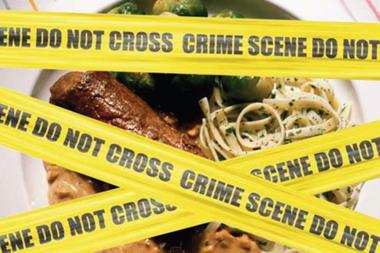The UK is to get its first food crime unit by the end of the year. Jessica Burt of Mills & Reeve outlines what food companies need to know now
The UK’s first food crime unit is to be set up within the Food Standards Agency (FSA) and will be operational by the end of this year. The creation of the unit was a key recommendation in the final report of Professor Chris Elliott’s review of the integrity and assurance of food supply networks. It will be responsible for co-ordinating information and investigations between government, regulatory, industry and international agencies and supporting enforcement action.
Historically, the UK has not prioritised investigations and responses to organised food crime. The new unit will no doubt be welcomed by the food industry as it will give better protection of products and brands – but food companies now need to make sure they understand what this means in practice.
Apples and oranges
The focus of the food crime unit will be organised crime within the food sector. Professor Elliott was clear to differentiate food fraud from food crime. The latter involves random acts by ‘rogue elements’ of a business, while food crime is defined as ‘an organised activity by groups which knowingly set out to deceive, and or injure, those purchasing food.’ The investigative focus of the food crime unit should not therefore be straightforward regulatory breaches by otherwise responsible companies.
The FSA has the relevant expertise combined with the national remit to lead on this, but coordination and cooperation – particularly with the police – will be essential. The review itself also places increased responsibility on food companies in terms of collaboration and appropriate auditing and risk assessment processes.
Spilling the beans
Intelligence gathering will be vital to the investigations and success of the food crime unit. Whether this will be effectively carried out will depend on the resources allocated to it. In particular, it will rely on an improved network of analytical food laboratories and officials to ‘horizon scan’ for areas of vulnerability, via the review of such factors as commodity prices and environmental concerns.
Information sharing – between enforcement agencies, the industry as a whole and via other third country agencies – and targeted enforcement action will be crucial. There will also be a greater reliance on the use of ‘earned recognition’, which enables local authorities to reduce the frequency of inspections of compliant and lower risk businesses, in order to better focus resources.
The sharing of information in such a competitive and highly regulated industry will always be contentious. In light of this, the government’s response to Elliott references the FSA’s ability to receive anonymous information, as well as via the Primary Authority schemes (where a company forms a statutory partnership with a single local authority). However, it is recognised the maintenance of anonymity and protection from enforcement action will remain a factor in what information companies are prepared to share.
Carrot and stick
Professor Elliott proposes the use of a ‘safe haven’, funded by the industry, to protect companies that share potentially sensitive information. The government’s response states that it will help the industry facilitate the development of options to improve intelligence across the food chain. If such a ‘haven’ were created, then specific protection against disclosure requests should also be provided.
These possible protections within a ‘safe haven’ are allied with the overall threat of companies withholding ‘well evidenced’ information being viewed as akin to obstructing the course of justice. Elliott makes the point that if any party can be shown to have profited from criminal property while knowing, or even suspecting that it was such, they may be culpable under the Proceeds of Crime Act 2002. The review uses the rather draconian example of the procurement of goods for less than the recognised reasonable price, based on market knowledge, as one where suspicion may be raised.
This puts the duty on the food industry to appropriately check its sources and supplies, particularly where commodity prices or suppliers may be under pressure. This, in turn, will have implications for audit and risk assessment procedures and any possible defence of due diligence. Specifically, that ‘the food industry needs to realise the extent of their exposure should adulteration or substitution occur, both in terms of the potential for the endangerment of consumers, and brand damage and loss of revenue’.
As easy as pie?
The Food Crime Unit should be seen as a tool to help protect the food sector from criminal activity, and so protect consumers, products and product quality. It is hoped that it will, as Professor Elliott recommends, mark a change in culture to a partnership approach with responsible companies, regulators and the Government working together.
The co-ordination and sharing of information will be important to the Food Crime Unit’s success and it is now up to the industry to propose how any ‘safe haven’ may work and the protections that are required.
Jessica Burt is food law solicitor and a member of Professor Elliot’s advisory team at national law firm Mills & Reeve



















No comments yet